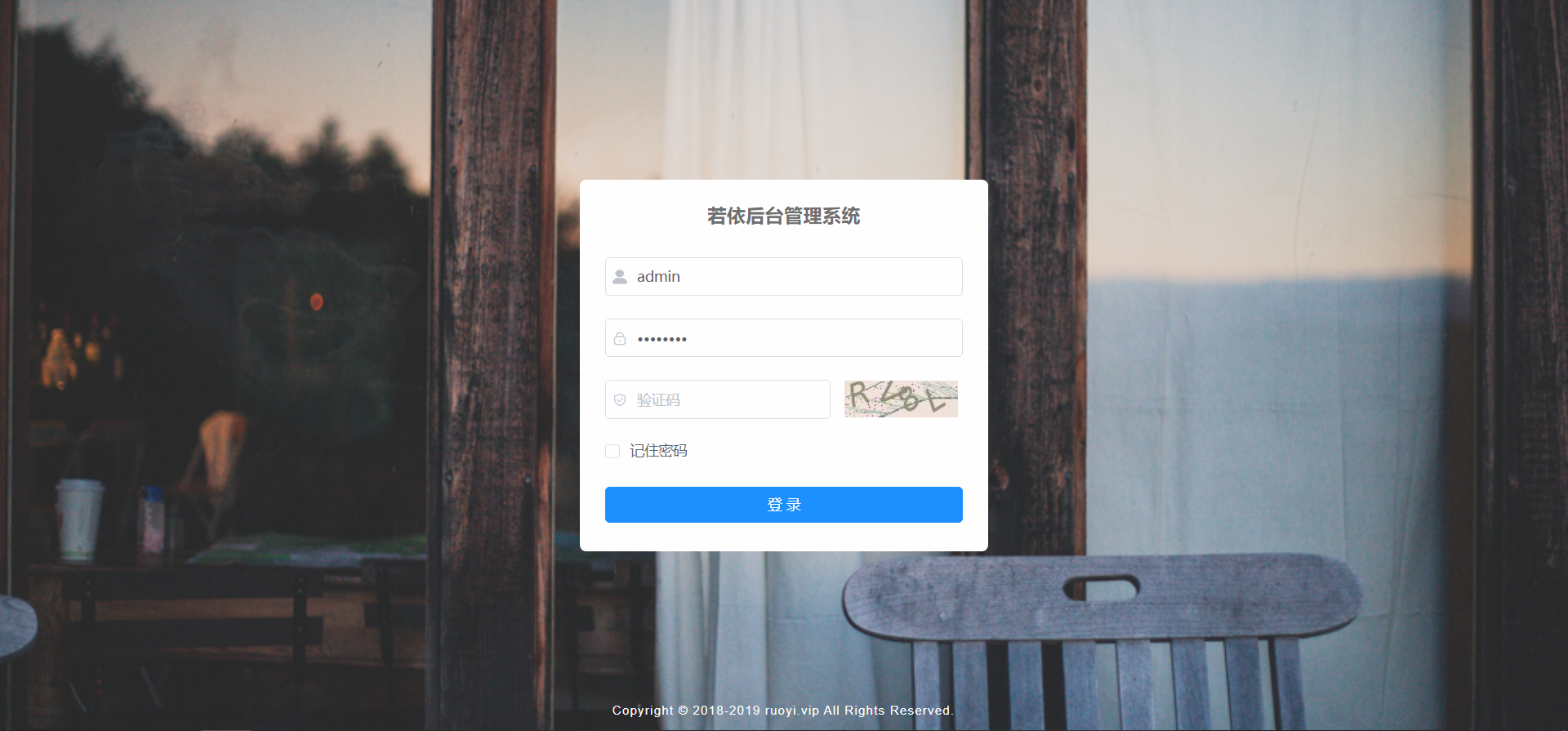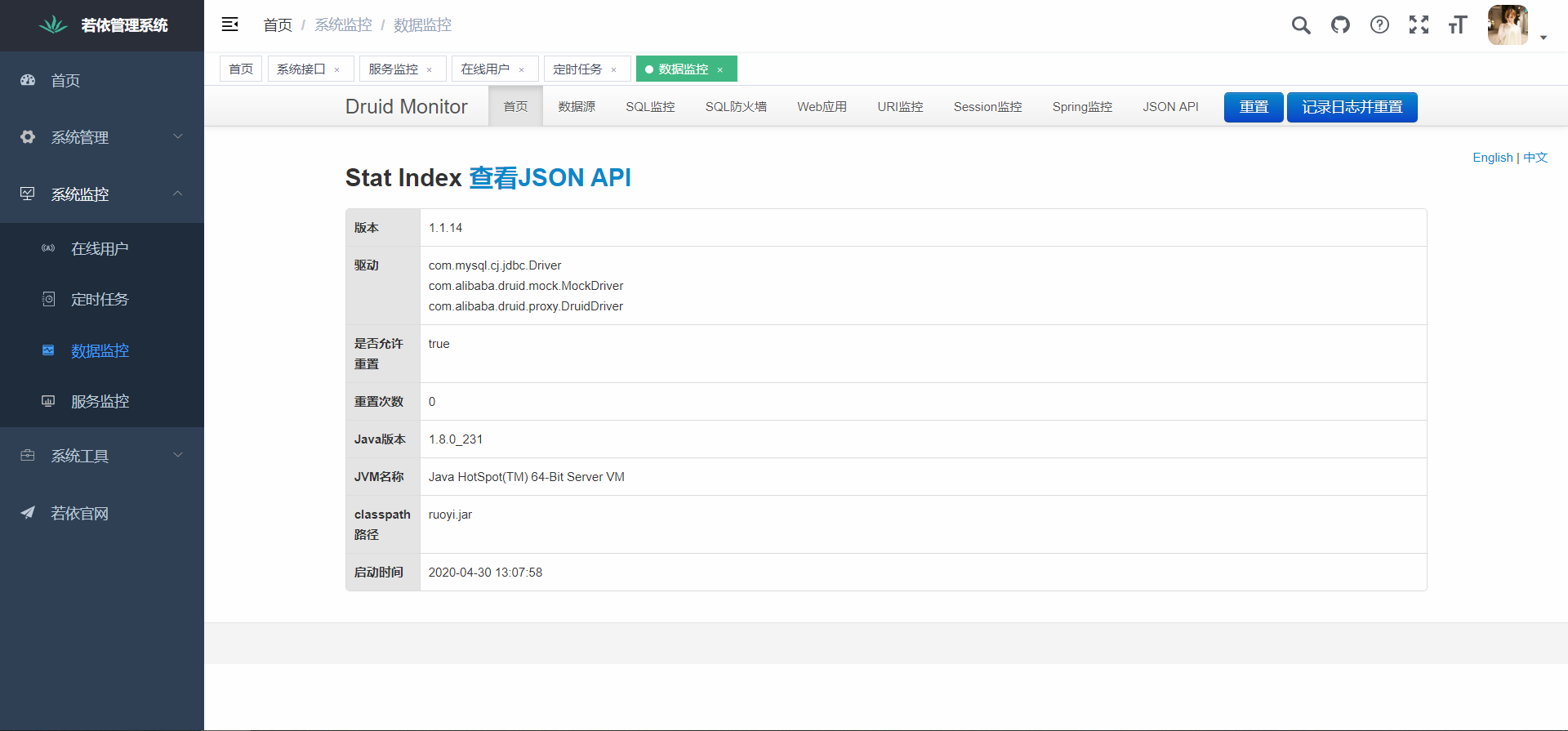一、前言
1、非常感谢若依作者为大家提供的非常优质的开源web项目,非常感谢!!!
2、若依官方文档:http://doc.ruoyi.vip/ruoyi/
3、若依官方链接:
1)若依管理系统官方体验地址:http://vue.ruoyi.vip/login?redirect=%2Findex
2)若依官网:http://www.ruoyi.vip/
3)RuoYi源码地址:https://gitee.com/y_project/RuoYi
4)RuoYi-Vue(前后端分离版本)地址:https://gitee.com/y_project/RuoYi
二、部署前工作
1、系统:阿里云 centOs8
2、安装并配置好以下应用软件
1)jdk1.8 +

2)maven

3)MySQL

4)nginx

5)Redis

三、前端工程
1、执行:npm install

1)报错:
ReferenceError: primordials is not defined
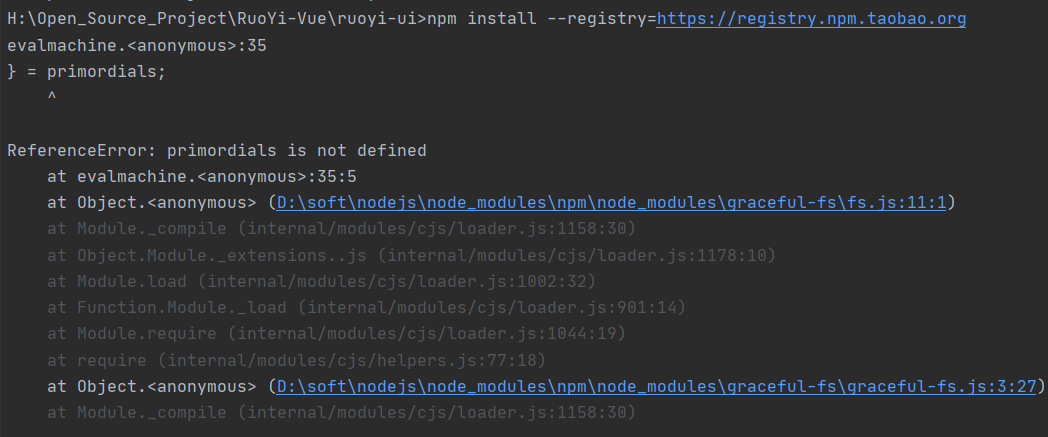
2)解决办法:
A:打开cmd: node -v 查看nodejs的版本
这个必须要nodejs10+的版本,我是12.16版本就不行

B:去官网下载nodejs10+的版本来安装:https://nodejs.org/dist/latest-v10.x/

3)报错:

4)解决:node-sass 的数据源没设置 --> npm config set sass_binary_site=https://npm.taobao.org/mirrors/node-sass
再重新 npm install --> OK

2、执行:npm install --registry=https://registry.npm.taobao.org

3、修改配置文件中的两个端口号
1)nginx端口
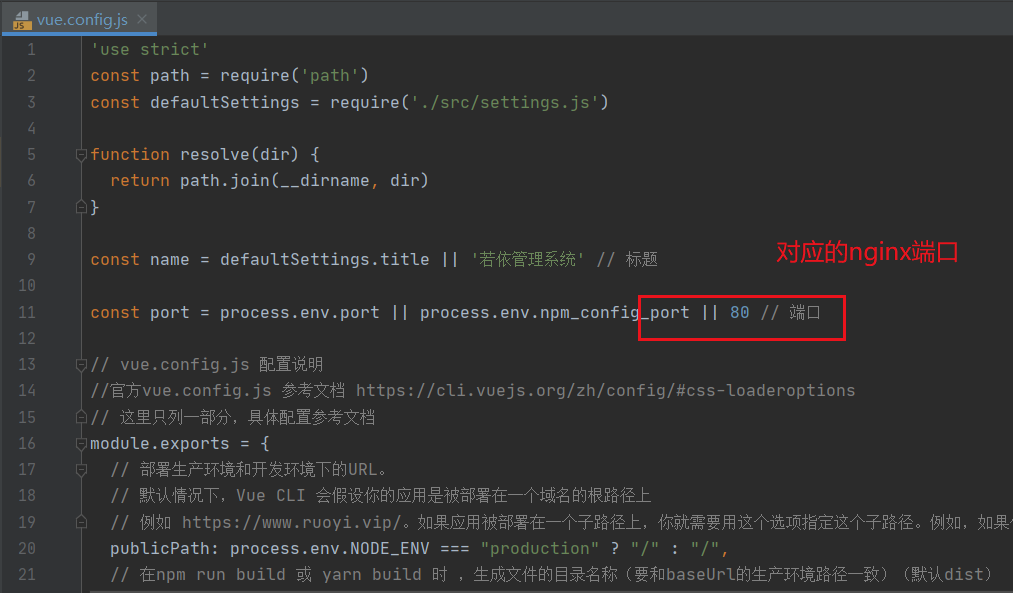
2)后端地址及端口(这个端口就是连接后端的,所以,这个端口要和后端工程application.yaml中的端口配置相同)

4、执行:npm run build:prod

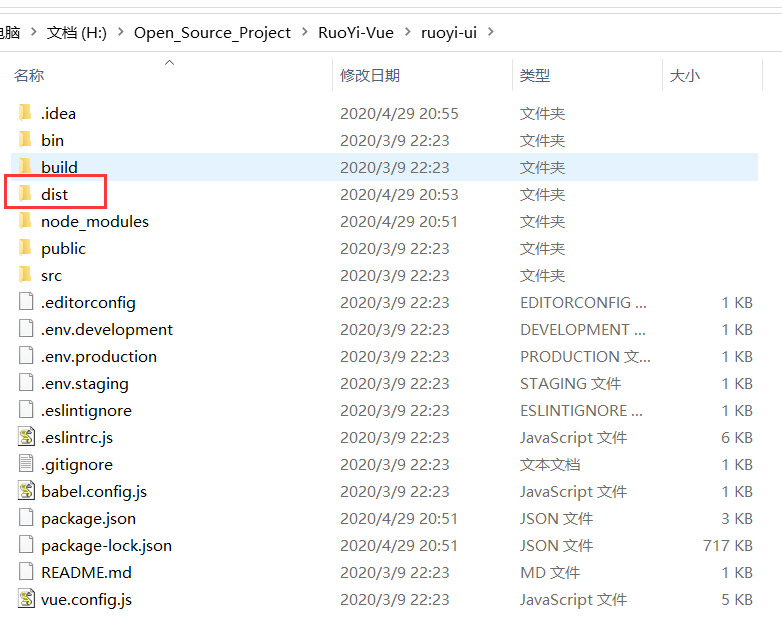
四、后端工程
1、修改数据库地址、用户名、密码,配置文件的“文件位置”。
2、修改端口号(这个端口号要和前端工程的端口号相一致)
3、去后端工程的bin目录下

4、在Linux下新建一个目录(我自己新建的 /usrl/local/web),专门用来装前后端工程。把前后端工程上传到Linux

5、配置nginx的配置文件
1)把里面的 server_name 改成自己的阿里云IP地址
2)再配置指向后端工程的反向代理
#user nobody; worker_processes 1; #error_log logs/error.log; #error_log logs/error.log notice; #error_log logs/error.log info; #pid logs/nginx.pid; events { worker_connections 1024; } http { include mime.types; default_type application/octet-stream; #log_format main '$remote_addr - $remote_user [$time_local] "$request" ' # '$status $body_bytes_sent "$http_referer" ' # '"$http_user_agent" "$http_x_forwarded_for"'; #access_log logs/access.log main; sendfile on; #tcp_nopush on; #keepalive_timeout 0; keepalive_timeout 65; #gzip on; server { listen 80; server_name IP地址; # 别写localhost #charset koi8-r; #access_log logs/host.access.log main; location / { root /usr/local/web/dist; # 前端工程的目录 index index.html; # 前端页面 try_files $uri $uri/ /index.html; } location /prod-api/ { # 反向代理到后端工程 proxy_set_header Host $http_host; proxy_set_header X-Real-IP $remote_addr; proxy_set_header REMOTE-HOST $remote_addr; proxy_set_header X-Forwarded-For $proxy_add_x_forwarded_for; proxy_pass http://localhost:8080/; } #error_page 404 /404.html; # redirect server error pages to the static page /50x.html # error_page 500 502 503 504 /50x.html; location = /50x.html { root html; } # proxy the PHP scripts to Apache listening on 127.0.0.1:80 # #location ~ .php$ { # proxy_pass http://127.0.0.1; #} # pass the PHP scripts to FastCGI server listening on 127.0.0.1:9000 # #location ~ .php$ { # root html; # fastcgi_pass 127.0.0.1:9000; # fastcgi_index index.php; # fastcgi_param SCRIPT_FILENAME /scripts$fastcgi_script_name; # include fastcgi_params; #} # deny access to .htaccess files, if Apache's document root # concurs with nginx's one # #location ~ /.ht { # deny all; #} } # another virtual host using mix of IP-, name-, and port-based configuration # #server { # listen 8000; # listen somename:8080; # server_name somename alias another.alias; # location / { # root html; # index index.html index.htm; # } #} # HTTPS server # #server { # listen 443 ssl; # server_name localhost; # ssl_certificate cert.pem; # ssl_certificate_key cert.key; # ssl_session_cache shared:SSL:1m; # ssl_session_timeout 5m; # ssl_ciphers HIGH:!aNULL:!MD5; # ssl_prefer_server_ciphers on; # location / { # root html; # index index.html index.htm; # } #} }
6、用后台的方式启动 后端工程:nohup java -jar ruoyi.jar > ruoyi_log.out &

启动完成,用浏览器打开网址就可以了。
